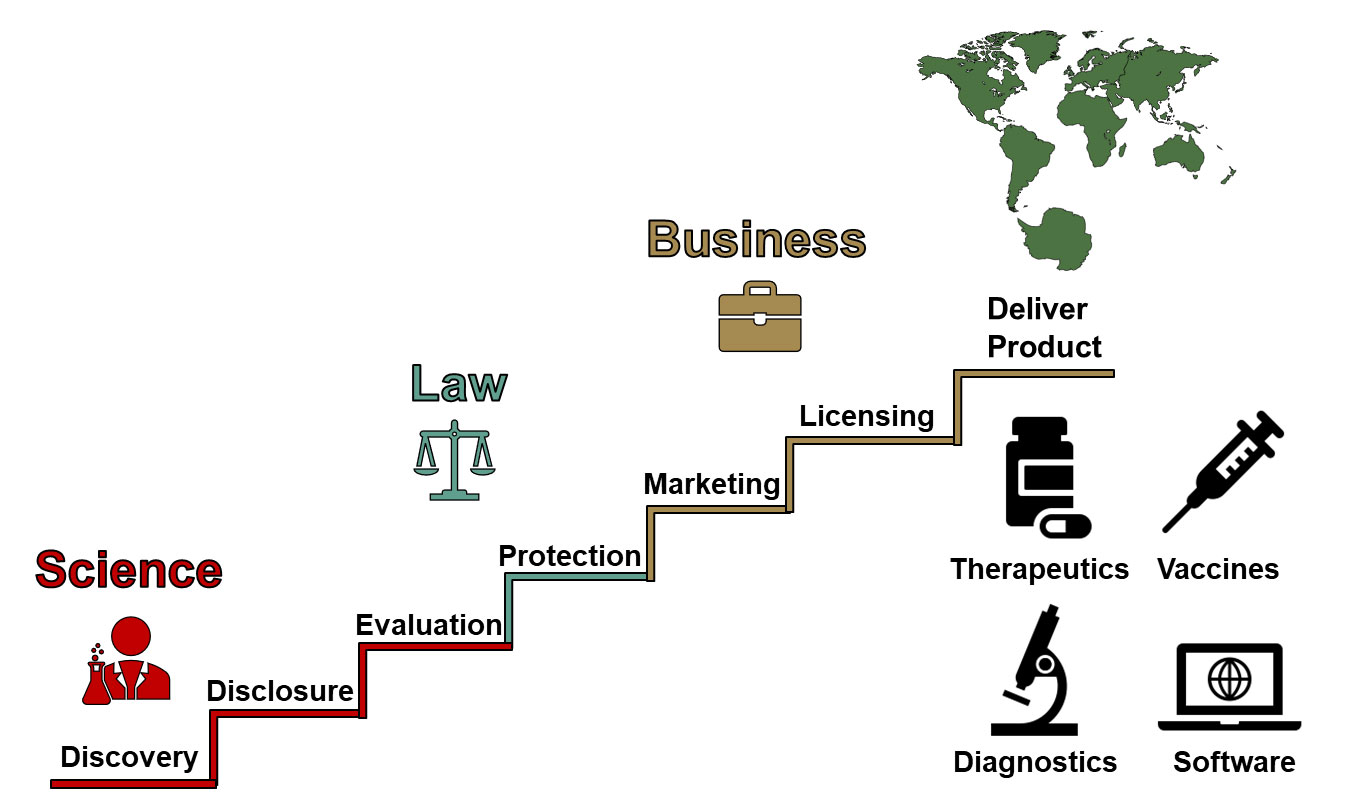Report on the Strategic Integration of Artificial Intelligence in Supply Chain Management and its Contribution to Sustainable Development Goals
A five-year retrospective analysis of Artificial Intelligence (AI) in supply chain management reveals its evolution from a niche technology to a strategic imperative for industrial enterprises. This transformation has yielded significant operational benefits and demonstrates a strong alignment with several United Nations Sustainable Development Goals (SDGs), particularly those concerning industry, economic growth, and responsible production.
Key Contributions to Sustainable Development Goals
- SDG 9: Industry, Innovation, and Infrastructure: AI has been instrumental in building resilient supply chain infrastructure, fostering innovation, and upgrading industrial processes for greater efficiency and sustainability.
- SDG 12: Responsible Consumption and Production: AI-driven optimization has led to substantial reductions in material waste, optimized inventory levels, and more efficient use of resources, directly supporting sustainable production patterns.
- SDG 8: Decent Work and Economic Growth: By enhancing supply chain resilience and efficiency, AI promotes stable economic growth. It also contributes to improved working conditions by automating repetitive tasks and increasing safety through predictive maintenance.
- SDG 17: Partnerships for the Goals: The adoption of AI has been accelerated through strategic partnerships between enterprises and technology innovators, showcasing a collaborative approach to achieving sustainable development.
A Five-Year Trajectory of AI Integration and SDG Impact
The evolution of AI in supply chains from 2020 to the present day illustrates a clear path toward achieving enhanced sustainability and resilience.
-
2020: Crisis-Driven Adoption and Foundational Resilience
The global pandemic necessitated the rapid adoption of AI to manage unprecedented supply chain disruptions. This initial phase focused on building foundational resilience, a core target of SDG 9. Early applications included:
- Identifying duplicate materials to reduce procurement waste.
- Synchronizing inventories with real-time data to minimize excess stock, contributing to SDG 12.
- Reducing facility downtime and logistics expenses through better resource allocation.
-
2021: Scaling for Resilience and Resource Efficiency
Enterprises began to scale AI solutions to build long-term resilience and agility. This phase saw the emergence of applications that directly support SDG 9 and SDG 12 through partnerships (SDG 17) with foundational AI innovators. Key developments included:
- Real-time tracking and predictive maintenance to optimize asset lifespan and prevent waste.
- Analysis of vendor performance and safety stock to ensure responsible and efficient production.
- Cloud-based machine learning platforms to manage vast data streams for improved resource management.
-
2022: Data Harmonization for Sustainable Production
The focus shifted to connecting disparate data streams to create a unified view of the supply chain. This harmonization was critical for advancing the principles of SDG 12 by enabling more precise and responsible operational control. AI-powered strategies included:
- Improved demand forecasting accuracy to prevent overproduction and material waste.
- Strategic nearshoring and onshoring, leveraging AI to optimize local supply chains and support local economies (SDG 8, SDG 11).
- Measurable reductions in asset downtime through predictive maintenance, conserving resources.
-
2023: The Generative AI Revolution
Generative AI introduced new capabilities for enhancing operational sustainability. It streamlined complex processes, contributing to more efficient work environments (SDG 8) and further optimizing production (SDG 12). Enterprises leveraged AI-native solutions to:
- Harmonize Maintenance, Repair, and Operations (MRO) data across global systems.
- Generate actionable insights from procurement data to reduce lead times and working capital.
- Improve uptime by ensuring the availability of critical parts, preventing costly and wasteful disruptions.
-
2024: AI as a Strategic Imperative for Sustainable Industry
AI became fully integrated as a strategic necessity for supply chain resilience and transparency, directly aligning with the goals of SDG 9. Organizations implemented advanced AI for:
- Enhanced traceability and visibility across the supply chain.
- Prescriptive analytics to optimize the balance between costs, risks, and sustainability objectives.
- AI-driven criticality assignments for informed stocking decisions, minimizing waste and ensuring operational continuity.
The 2025 Landscape: Deepening SDG Alignment with Agentic AI
Looking ahead, the integration of agentic AI is poised to further advance sustainability in supply chains. These autonomous AI systems will guide and optimize operations around the clock, deepening the alignment with key SDGs.
Anticipated Developments:
- Continuous Resource Optimization (SDG 12): Agentic AI will autonomously manage inventory, logistics, and procurement to continuously minimize waste and energy consumption.
- Proactive Economic Stabilization (SDG 8): AI agents will forecast demand and navigate regulatory shifts like tariffs in real-time, helping to stabilize operations and protect economic growth.
- Intelligent and Resilient Infrastructure (SDG 9): “Robot” helpers driven by agentic AI will provide 24/7 guidance to create self-optimizing supply chains that are inherently more resilient and efficient.
Conclusion: A Proven Framework for Sustainable Industrial Development
The past five years have proven that AI is a powerful tool for transforming supply chains into more resilient, efficient, and sustainable systems. By enabling data harmonization, cost reduction, and enhanced resilience, AI provides a proven framework for asset-intensive industries to achieve significant progress toward SDG 9 (Industry, Innovation, and Infrastructure), SDG 12 (Responsible Consumption and Production), and SDG 8 (Decent Work and Economic Growth). As the technology matures, its role in driving sustainable industrial development will only continue to expand.
SDGs Addressed in the Article
SDG 9: Industry, Innovation, and Infrastructure
- The article extensively discusses the transformation of supply chain management within “manufacturing and industrial enterprises” through the adoption of AI technology. This directly relates to fostering innovation and upgrading industrial processes. The text emphasizes building resilience in supply chains to navigate an “uncertain global landscape,” which is a core component of developing resilient infrastructure.
SDG 12: Responsible Consumption and Production
- The article highlights how AI helps companies achieve more efficient use of resources. By “identifying duplicate materials,” reducing “excess inventory,” and optimizing material management, AI contributes to the reduction of waste and promotes more sustainable production patterns within industrial supply chains.
SDG 8: Decent Work and Economic Growth
- The article connects the adoption of AI technology to achieving higher levels of economic productivity. It repeatedly mentions benefits like “significant cost savings,” “optimized working capital,” and “hard-dollar returns,” which are direct contributions to the economic growth and productivity of enterprises.
Specific Targets Identified
SDG 9: Industry, Innovation, and Infrastructure
-
Target 9.2: Promote inclusive and sustainable industrialization.
- The article describes AI as a “strategic imperative for manufacturing and industrial enterprises,” showcasing a pathway to strengthen and modernize the industrial sector through technology.
-
Target 9.4: Upgrade infrastructure and retrofit industries to make them sustainable, with increased resource-use efficiency and greater adoption of clean and environmentally sound technologies and industrial processes.
- The article provides clear examples of this target in action. AI is presented as a technology that increases resource-use efficiency by enabling “predictive maintenance,” reducing “asset downtime,” optimizing inventories, and lowering “logistics expenses.”
SDG 12: Responsible Consumption and Production
-
Target 12.2: Achieve the sustainable management and efficient use of natural resources.
- The article explains that AI is used for “managing materials and inventories” and ensuring the “availability of supply for critical parts.” This leads to more efficient use of physical materials and resources.
-
Target 12.5: Substantially reduce waste generation through prevention, reduction, recycling and reuse.
- The text explicitly states that early AI adoption helped companies in “identifying duplicate materials” and “identifying excess inventory,” which are direct methods of waste prevention and reduction in the supply chain.
SDG 8: Decent Work and Economic Growth
-
Target 8.2: Achieve higher levels of economic productivity through diversification, technological upgrading and innovation.
- The entire article serves as a case study for this target, detailing a “five-year retrospective” of how technological upgrading with AI has led to significant productivity gains, such as “substantial cost savings,” “improved service levels,” and “optimized working capital.”
Indicators for Measuring Progress
SDG 9: Industry, Innovation, and Infrastructure
-
Target 9.4
- Reduced Asset Downtime: The article explicitly mentions that AI-powered predictive maintenance resulted in “measurable reductions in asset downtime.”
- Reduced Logistics Expenses: The text notes that early adopters of AI “achieved meaningful reductions in logistics expenses.”
- Improved Uptime: A stated benefit of AI solutions is to “improve uptime by ensuring the availability of supply for critical parts.”
SDG 12: Responsible Consumption and Production
-
Targets 12.2 and 12.5
- Reduction in Excess Inventory: The article points to AI’s ability in “identifying excess inventory” as a key benefit.
- Reduction in Working Capital: A mentioned outcome is the ability to “decrease working capital requirements,” which implies more efficient use of material and financial resources, reducing the need to hold wasteful excess stock.
- Harmonization of MRO Data: The article mentions AI’s use in “harmonizing MRO data across global supply chains,” which helps in identifying and reducing duplicate and unnecessary parts.
SDG 8: Decent Work and Economic Growth
-
Target 8.2
- Cost Savings: The article repeatedly refers to “significant cost savings” and how organizations have “unlocked millions in savings.”
- Return on Investment (ROI): Progress is indicated by the shift in client expectations from unknown benefits to “demanding substantial ROI.”
- Improved Service Levels: One of the initial benefits realized by companies was “improved service levels.”
Summary of Findings
| SDGs | Targets | Indicators (Mentioned or Implied in the Article) |
|---|---|---|
| SDG 9: Industry, Innovation, and Infrastructure | 9.4: Upgrade infrastructure and retrofit industries to make them sustainable, with increased resource-use efficiency and greater adoption of … technologies. |
|
| SDG 12: Responsible Consumption and Production | 12.2: Achieve the sustainable management and efficient use of natural resources.
12.5: Substantially reduce waste generation through prevention, reduction… |
|
| SDG 8: Decent Work and Economic Growth | 8.2: Achieve higher levels of economic productivity through … technological upgrading and innovation. |
|
Source: forbes.com







